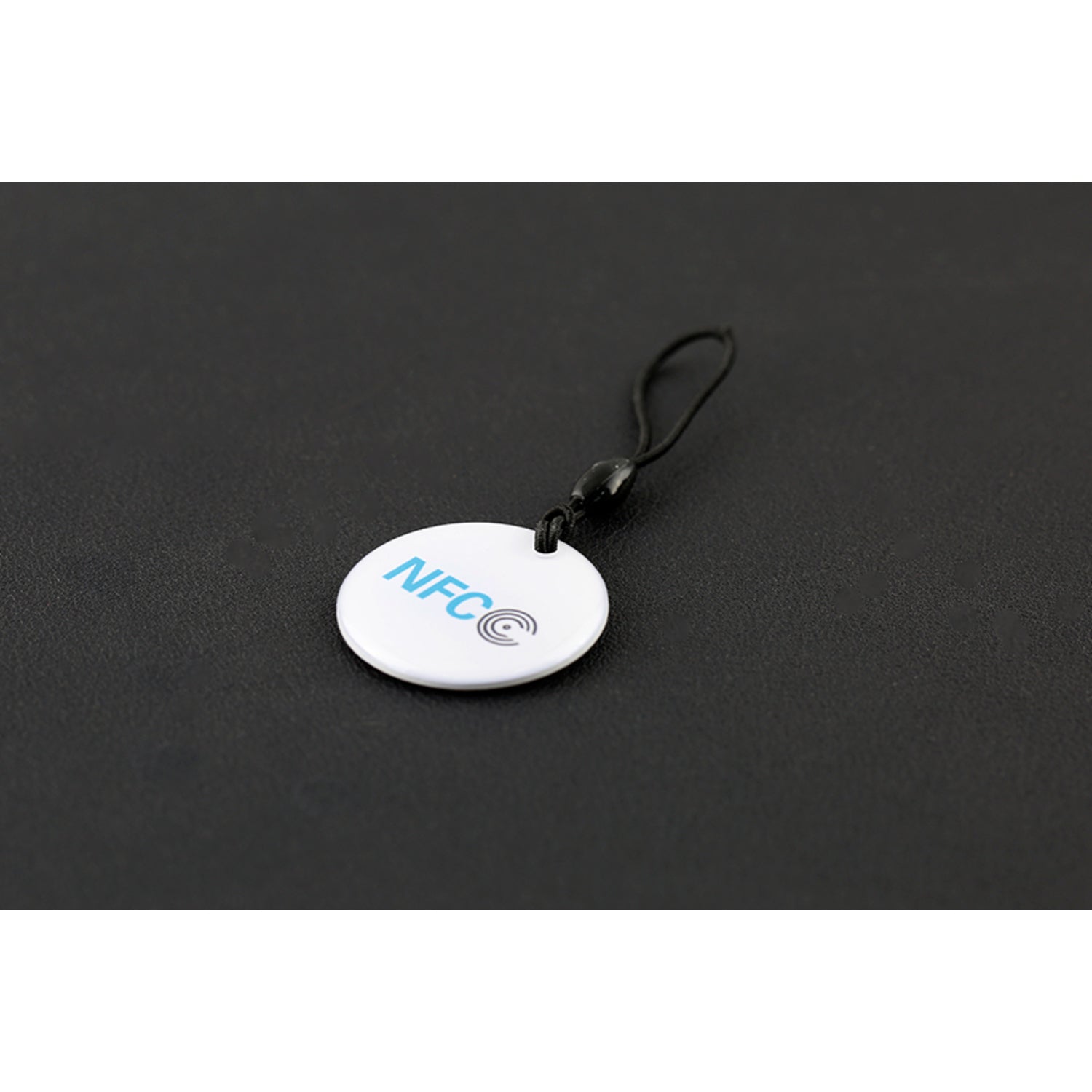The Round NFC Tag operates at 13.56MHz and is a great choice for various systems. It's perfect for electronic locks, customer identification, and other scenarios where a small, portable tag is needed. This tag comes with a NXP S50 chip and an antenna. It gets power passively from the reader/writer when placed a few inches away. Almost any 13.56MHz RFID/NFC reader or NFC - enabled mobile device can read this Mifare - One NFC tag. It can store up to 1 KB of data in writable EEPROM divided into banks and can handle over 100,000 re - writes. Each sticker has a non - changeable 4 - byte ID for easy identification. The NXP TagWriter app helps you format (NDEF exchange protocol) and store contacts, bookmarks, geo - location, Bluetooth Handover, SMS, Mail, and text messages on the tag. Applications include contactless payment systems, Bluetooth and Wi - Fi connections, social networking for sharing, electronic identity documents, and smartphone automation. Specifications: Operating Frequency: 13.56 MHz, EEPROM storage: 1K Byte, Default protocol: ISO14443A, 4 Byte unique identifier, Variable Identification distance: 0~5cm, Service life: >=10 years, Service time: 100,000 re - writes, Material: ABS/PVC, Size: 3.2x2.8x2.5cm (1.26x1.10x0.98'), Weight: About 3g. Documents provided are a list of NFC - enabled mobile devices, MF1 IC S50 datasheet, and NFC Forum. Shipping includes 1 Round NFC Tag.

Using the Round NFC Tag is easy. First, make sure your reader/writer or NFC - enabled mobile device is working properly. When you want to use the tag, just place it a few inches away from the reader/writer, and it will get powered up. To store data, use the NXP TagWriter app. You can store things like contacts and bookmarks with just a few taps. Remember, the 4 - byte ID on the tag can't be changed, so use it to tell one tag from another. For maintenance, keep the tag away from extreme temperatures and moisture. It has a long service life of over 10 years and can handle more than 100,000 re - writes, but try not to over - use it. Also, if you're using it for payment systems or identity documents, make sure to protect it from physical damage.